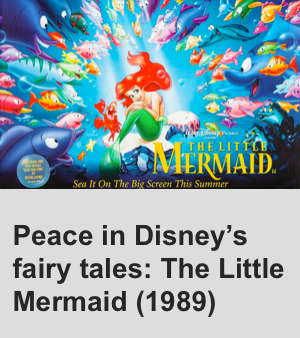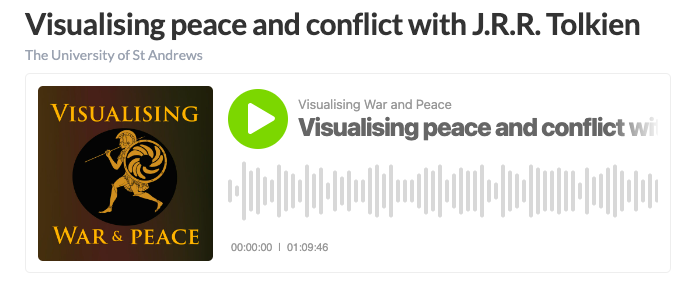
Several members of our research team have been exploring peace-storytelling from different angles. We have drawn on a range of scholarship and practice along the way, including developments in ‘useful fiction‘ and the work of the Narrative Transformation Lab. As Peter Singer and August Cole explain, Useful Fiction ‘works at the intersection of strategic narrative, foresight and change management, helping organizations to identify and better tell their key “stories”…’ Grounded in research and reality, it employs the tools of fictional storytelling to bring challenging scenarios to life and help readers to imagine and empathise their way into productive futures thinking/planning. The Narrative Transformation Lab’s ‘theory of change’ is that ‘the stories we tell can give rise to peace just as much as they do conflict. Building a more just and peaceful world requires telling better stories—and that means building a better understanding of narrative and conflict transformation.’
Taking on both of these challenges, our team has created some experimental ‘useful fiction’ of our own, with the aim both of visualising peace in fresh ways and of using the power of storytelling to think through future challenges and approaches to peacebuilding. We have also experimented with autoethnography, as a way of translating personal experiences into engaging case studies and as an engaging method for communicating our research, via ‘everyday journalling’ and study-based learning journeys. ‘Speculative history’ is another creative approach we have explored. It deploys storytelling techniques to foreground questions and issues not covered by more traditional history-writing. For instance, despite the absence of ancient evidence for women’s experiences of post-conflict recovery, authors like Natalie Haynes have extrapolated from what we know of more recent conflicts to imagine what ancient women might have gone through.
Three team members have focused their research on three different genres of storytelling: fairy tales, Disney animations/adaptations, and fantasy. In Once Upon A Time there was… Peace, Kim Wahnke analyses the structure and form of fairytales (which lend themselves to particular ways of narrating conflict and representing heroes/villains), their habits of visualising both peace and peacebuilding, and their profound impacts on young people. Conditioning our understanding of ‘right’ and ‘wrong’ from a very early age, fairytales play a significant role in socialising us into certain modes of behaviour and thought. Connecting up with our team’s work on peace education, Kim considers what interventions we might deploy to encourage more critical engagement with fairytale visualisations of peace and peacebuilding, and also how we might tell more ‘fairy tales for peace‘ in future.
Tao Yazaki has put Disney’s The Little Mermaid under the microscope, unpicking the messages it shares about both inner peace and conflict resolution. As she concludes, ‘while this film goes some way towards exploring conditions and behaviours that can help build positive peace, even between polarised groups, it excludes some characters from that journey and leaves watchers with the impression that peace may only be enjoyed by “good” people(s), not by outcasts who have been deemed “evil”. This is a problematic message, a visualisation of peace that leaves room for ongoing othering, demonisation and conflict and that does not commit fully to reconciliation and rehabilitation for all.’ Like Kim, Tao underlines the widespread impact of this visualisation of peacebuilding, given the popularity and repeat viewing which films like this attract.
Albert Surinach I Campos is a published author and playwright himself, particularly interested in the fantasy genre. His Visualising Peace research focussed on the works (and later editions, film adaptations, etc) of J.R.R. Tolkien. In this podcast he and Tolkien expert Prof. Giuseppe Pezzini explore the nuance and complexity of Tolkien’s visions of peace in The Lord of the Rings. Albert also examined the role played by natural forces and the environment in Tolkien’s visualisation of peace and peacebuilding in ‘Waging War against Nature‘; and he has been analysing contemporary and later illustrations of Tolkien’s novels, to explore changing levels of emphasis on war and peace in connection with contemporary events.

Please also explore our ‘Peace Literature’ pages, where team members explore the theory of ‘peace literature‘ and share a resource that helps us all explore ‘peace poetry‘.
